Real-Life Luchador Cassandro on What’s Fact and Fiction in Gael García Bernal Movie ‘Cassandro’ (Exclusive)
- Oops!Something went wrong.Please try again later.
- Oops!Something went wrong.Please try again later.
Here’s the true story behind Saúl Armendáriz, whose “exótico” character Cassandro blazed trails in Mexico’s world of lucha libre
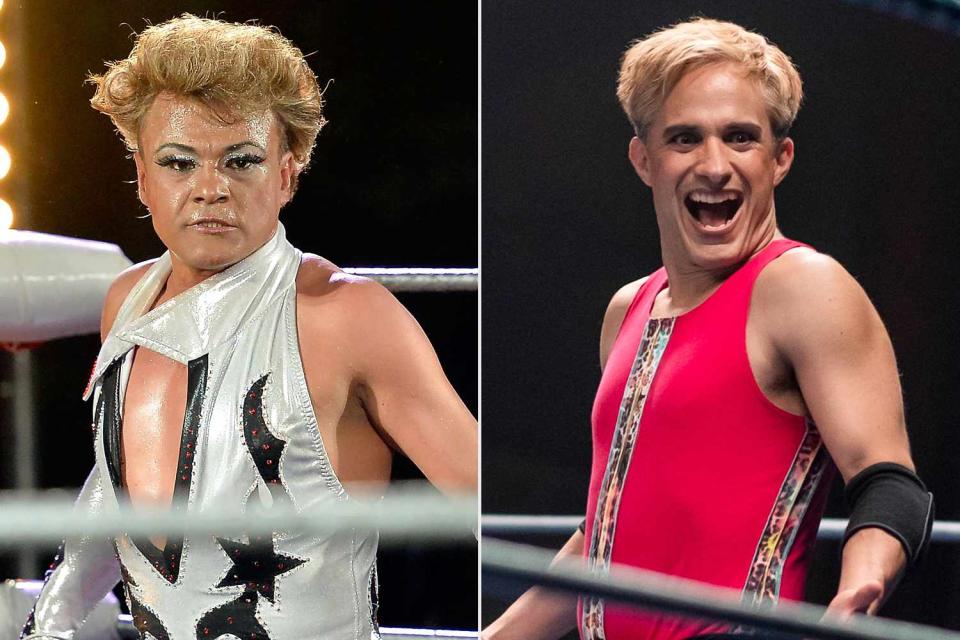
Aurelien Meunier/Getty; Courtsey of Alejandro Lopez Pineda/AMAZON CONTENT SERVICES LLC
Saúl Armendáriz and Gael García BernalGael García Bernal’s new movie seems stranger than fiction, but it’s based on the real-life story of Saúl Armendáriz — better known as his lucha libre alter ego, Cassandro.
Born and raised in El Paso, Texas, Armendáriz made a name for himself — literally — in the world of lucha libre, Mexico’s popular professional wrestling spectacle-sport. In Cassandro (in theaters now and streaming on Amazon Prime Video Sept. 22), Bernal recreates the important events that made Armendáriz, now 53, a cross-dressing luchador who blazed trails by becoming a world welterweight champion in 2011.
“When I watched the movie, I got emotional,” Armendáriz tells PEOPLE exclusively about the Roger Ross Williams-directed film. “I know it's inspired by me, but it's so real that it felt like my life. I identified with it.”
Which details in the movie are true to Armendáriz’s life? And did the luchador ever consider that Hollywood might tell that inspiring story? “No,” he admits, “but I am blessed that professional wrestling has led me to have very beautiful experiences.”
Here’s everything to know about Cassandro and its real-life subject, who the El Paso Times called “Mexico's first openly gay luchador, a brave move in the theatrical but overwhelmingly ‘man's man's’ world of professional wrestling.”
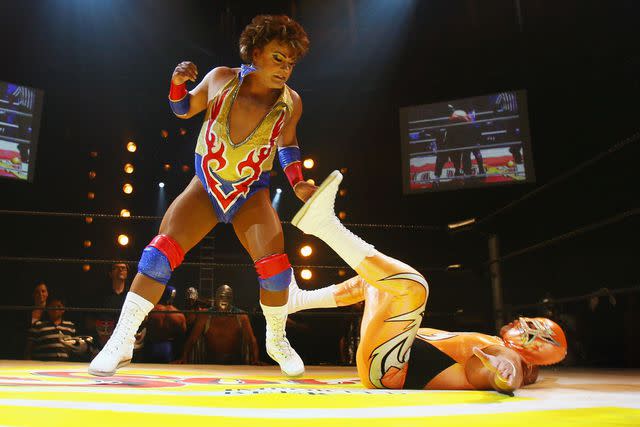
Daniel Berehulak/Getty
Cassandro (left)Who is Saúl Armendáriz a.k.a. Cassandro?
“Cassandro” is the creation of Armendáriz, a wrestling ring name for which he’s now internationally known. The five feet and five inches-tall man behind the luchador persona was born in El Paso May 20, 1970, and split time between Texas and nearby Ciudad Juárez, Mexico while growing up.
Armendáriz’s late mother Maria raised him from age 13 onward, after she and his father Sabas Galindo divorced. In William Finnegan’s 2014 New Yorker profile “The Man Without a Mask,” Armendáriz revealed his childhood was full of physical and sexual abuse.
At 15, Armendáriz dropped out of school to begin training as a luchador, debuting early personae called “Mister Romano” and “Rosa Salvaje.” The moniker “Cassandro” came from an admired brothel keeper in Tijuana named Cassandra, according to The New Yorker.
He has endured several injuries thanks to his line of work, especially competing in the more violent form of wrestling known as “lucha extrema,” and opened up to multiple outlets about a suicide attempt in 1991. On June 4, 2003, Armendáriz overcame a years-long addiction to drugs and alcohol.
In more recent years, he has delivered motivational speeches, taught aspiring luchadors and become a certified massage therapist and chiropractor.
At the January world premiere of the biopic Cassandro at the 2023 Sundance Film Festival, it was announced that Armendáriz had suffered a stroke resulting in limited speech and movement on one side of his body, per The Hollywood Reporter. Nevertheless, the superstar was beaming and decked in his characteristic sequined glamor.
Related: Inside PEOPLE's Sundance Film Festival 2023 Celebrity Portrait Studio
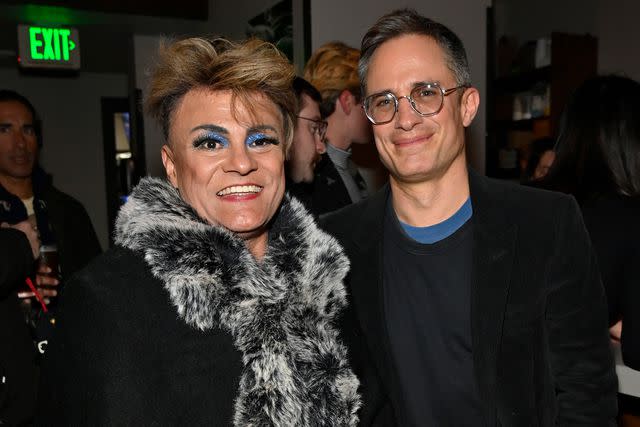
David Becker/Getty
Saúl Armendáriz and Gael García Bernal at the 2023 Sundance Film FestivalHow did he impact lucha libre?
Lucha libre has roots in Mexican history dating back to the 19th century, but exploded in popularity in Mexico City in the 1930s and then internationally in the 1950s thanks to television. In its most recognizable form, it involves staged fights with preordained winners and losers, form-fitting masks, elaborate costumes and character tropes including “exóticos.”
The Cassandro persona that Armendáriz began entertaining audiences with in lucha libre matches across Mexico in the late 1980s was an “exótico,” a boldly flamboyant character in drag makeup and colorful costumes.
Masked “exóticos” often played the role of the “rudo,” or villain, in lucha libre. But Armendáriz dared to show his face and urge match promoters to let him triumph as the “técnico,” or hero. Of his entrance as Cassandro, he told The New Yorker, “I wore a butterfly blouse of my mother’s. I wore the tail of my sister’s quinceañera dress. And then, to wrestle, a woman’s bathing suit.”
Never miss a story — sign up for PEOPLE's free daily newsletter to stay up-to-date on the best of what PEOPLE has to offer, from juicy celebrity news to compelling human interest stories.
Armendáriz made a name for himself as an openly queer “exótico,” after most luchadors adopting that trope publicly distanced themselves from homosexuality. In 1992, he became the first “exótico” to win a world lightweight championship.
He tells PEOPLE, “Exóticos were the mockery of professional wrestling; that's why I had to earn respect, and the best way was by becoming a world champion. I would step into the ring and transform into that unstoppable wrestler, and afterward, I would say, 'Well, mama, there's no other way,' and go for it."
As Cassandro, Armendáriz made a spectacle of Mexican culture’s machismo, challenging it by blurring the line between masculine and feminine and developing signature lewd moves and gestures.
“The reactions I get, even in Mexico, are mostly positive,” he told El Paso Times in 2012. “I have fans of both sexes and all ages. Women will yell at me to come over and kiss their husbands, which I do. It's part of the craziness of the show."
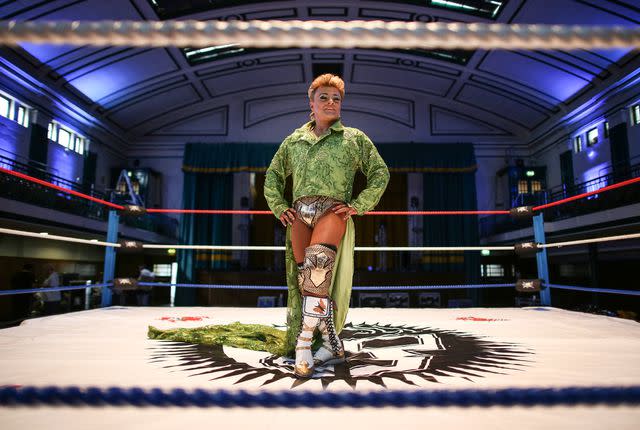
Peter Macdiarmid/Getty
Saúl Armendáriz a.k.a. CassandroWhat happens in the movie Cassandro?
Armendáriz’s life made its way to Hollywood thanks to writer-director Roger Ross Williams. A producer for The New Yorker Presents approached the Oscar-winning documentary filmmaker about adapting Finnegan’s profile into a short film.
“As a storyteller,” Williams tells PEOPLE, “there's just a moment where a story hits you and you know this is right… It was this immediate instinct and it was so strong, and it was almost like, I don't know, the Lucha libre spirits, the gay spirits, whatever, were speaking to me! I just was like, I have to tell this story.”
Bernal was the filmmaker’s top choice to play the title role in the feature-film version — and Armendáriz’s choice, too, he says. “The movie was never considered with anyone else but Gael García Bernal! It was an honor for me.”
Co-written by David Teague and costarring Roberta Colindrez, Raúl Castillo, Joaquín Cosío, Bad Bunny and famous luchador El Hijo del Santo as himself, Cassandro depicts Armendáriz’s young adult years spent with his supportive mother (played by Perla de la Rosa) and formulating his successful alter ego with the help of trainer Sabrina (Colindrez).
Related: Bad Bunny Shares a Smooch with Male Backup Dancer During His 2022 VMAs Performance
Hardships and setbacks emerge, but Bernal, as Armendáriz, discovers the power in adopting a stage persona with far more confidence than himself. The film’s climax depicts the bittersweet 1991 match against El Hijo del Santo; later, Armendáriz appears on the famed luchador’s talk show to talk openly about his queerness.
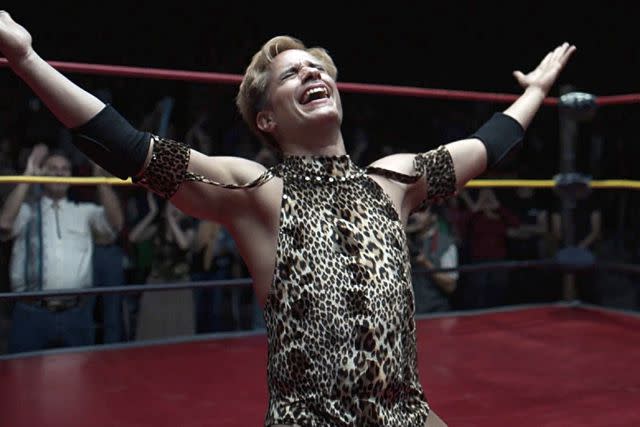
Courtesy of Amazon Prime Video
Gael García Bernal in "Cassandro"How much of Cassandro is true-to-life?
Armendáriz served as a consultant on the new movie based on his life story. When watching Cassandro for the first time, he says, it was “the accurate portrayal of the importance of my mom to me and our relationship, the challenges I faced, and the obstacles” that rang true the most.
Armendáriz’s relationship with his father is depicted as a strained one for most of the story in flashbacks, but by its end — as in real life — the two have reconnected.
Also in the film, Armendáriz has a secretive lover (Castillo) who is a fellow luchador and married to a woman. As he revealed to The New Yorker, that relationship is true-to-life and lasted 12 years, "from the age of 18 to 30. It was very damaging.”
Related: Gael Garcia Bernal's Girlfriend Fernanda Aragonés Is Pregnant with Their First Child Together
Colindrez’s character Sabrina, meanwhile, is loosely based on real luchador coaches from Armendáriz’s career. The real-life wrestler was most heavily inspired by the late “exótico” Baby Sharon.
The driving force of the movie Cassandro is the undeniable fact that “he triumphed over an entire macho industry, and he did it as his authentic self,” as Williams says of Armendáriz. “Learning to love yourself is a big theme in Cassandro and a big theme in all of the lives of all of us, but especially gay people, the LGBT+ community.”
Cassandro is in theaters now 15 and begins streaming on Amazon Prime Video Sept. 22.
For more People news, make sure to sign up for our newsletter!
Read the original article on People.

